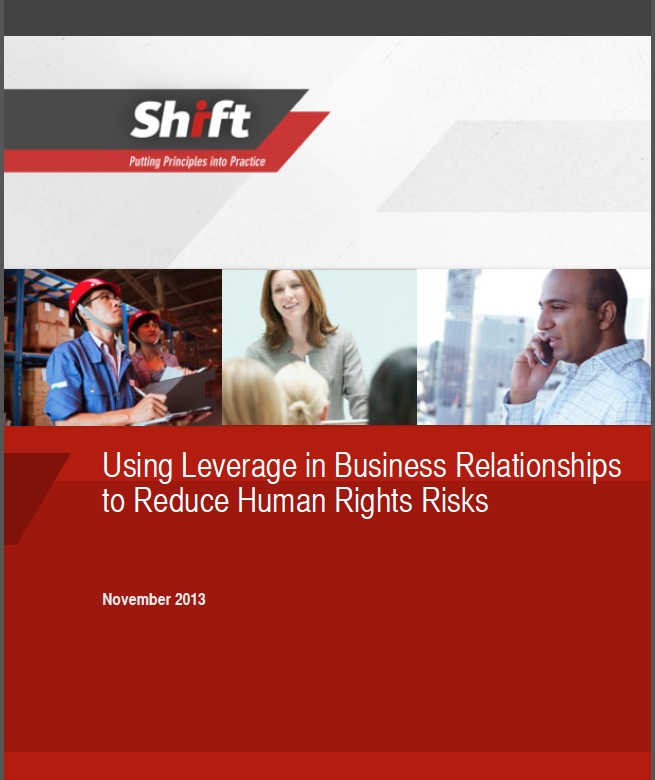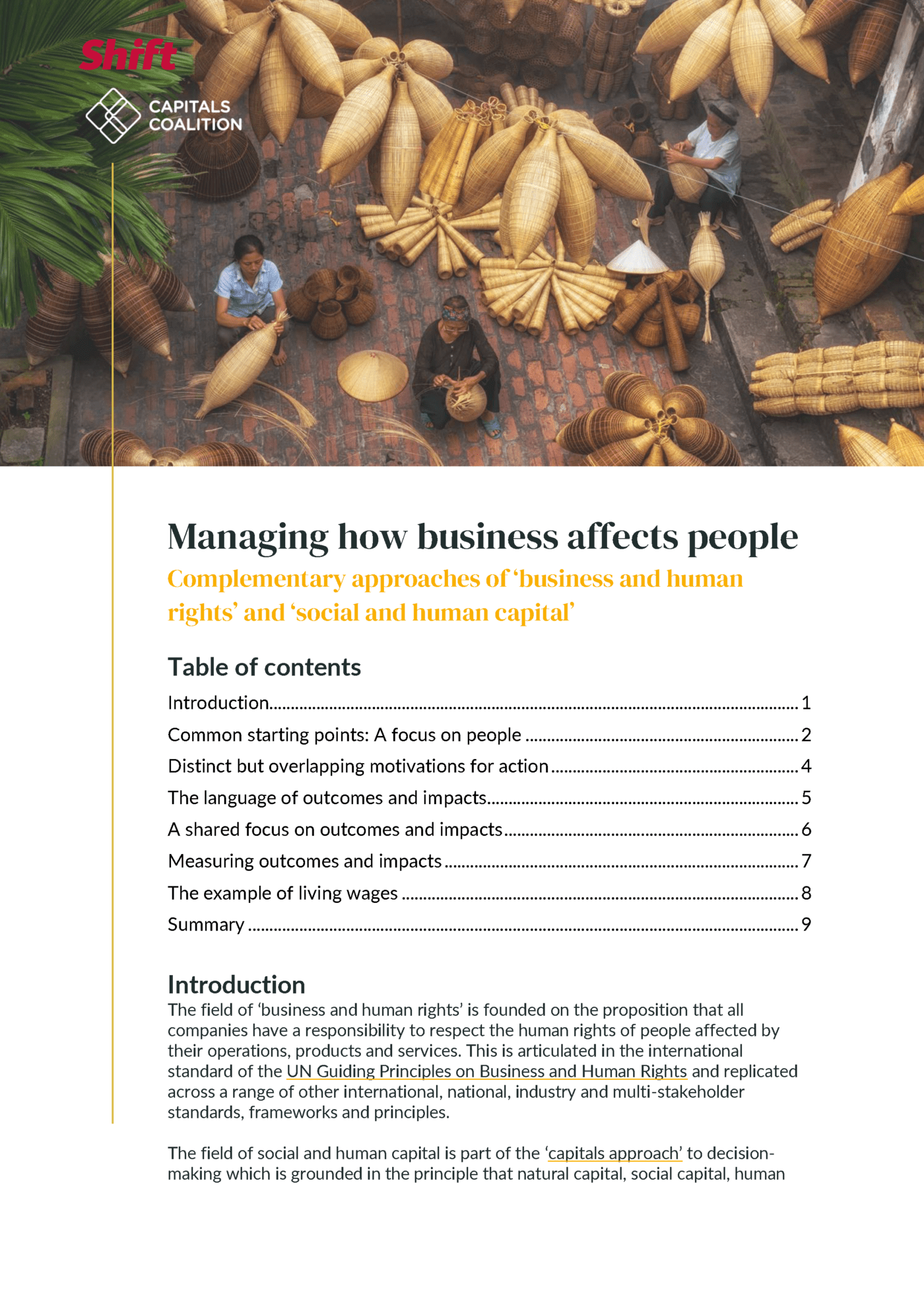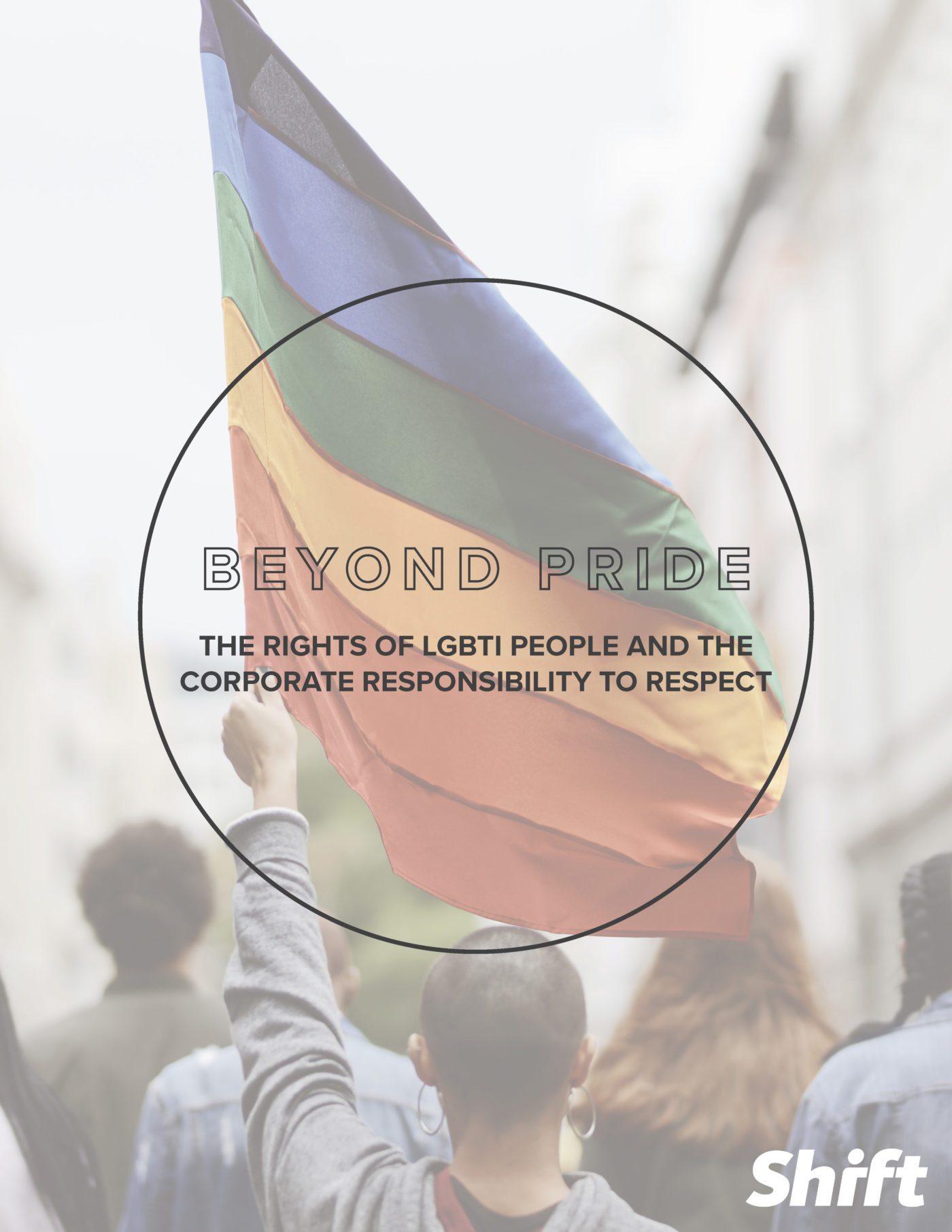Summary
What is leverage? It is a company’s ability to influence the behavior of others.
The concept of leverage plays a key role for companies in meeting the corporate responsibility to respect human rights. The Commentary to Guiding Principle 19 states that leverage is considered to exist where the company ha the ability to effect change in the wrongful practice of an entity that causes harm
Leverage gets to the heart of what companies can realistically be expected to do in practice when faced with human rights challenges. Even when companies have a dominant or influential commercial position in a business relationship, there are many questions about how to identify and exercise the most effective forms of leverage. At the same time, every company — regardless of size, industry or geography — faces situations in which it does not have, or does not perceive, sufficient leverage to influence the behavior or others. This raises questions about what steps can be taken to create or increase leverage; what steps could have been taken earlier in the relationship to have created leverage; and when and how to consider terminating a business relationship.
Leverage Over Whom, How and for What Purpose?
Companies can ask themselves three questions when they are seeking to build and exercise leverage over an entity:
- Over whom am I seeking to exercise leverage?
- How could I exercise leverage?
- What purpose could different forms of leverage achieve?
1. Over Whom?
What types of business relationships may a company have that would connect it to potential human rights harms? Very often, those types of relationships may be:
- upstream suppliers;
- joint venture or other “horizontal” business partners;
- downstream business customers, clients or end-users;
- goverments.
For specific examples of ways to exercise leverage over these groups, see page 17 of the resource.
2. How?
Once a company identifies who it is trying to influence, it can try to systematize its approach for exercise leverage by examining five categories of leverage.
- Traditional commercial leverage: leverage that sits within the activities the company routinely undertakes in commercial relationships. Specific means may include:
- Contracts;
- Audits;
- Bidding criteria;
- Questionnaires
- Incentives (price, volume, long-term business)
- Broader business leverage: leverage that a company can exercise on its own but through activities that are not routine or typical in commercial relationships. Specific means may include:
- Capacity building;
- Presenting a unified voice from each business department;
- Referencing international or industry standards;
- Leverage together with business partners: leverage created through collective action with other companies in or beyond the same industry. Specific means may include:
- Driving shared requirements of suppliers;
- Bilateral engagement with peer companies.
- Leverage through bilateral engagement: leverage generated through engaging bilaterally and separately with one or more other actors, such as government, business peers, an international organization or a civil society organization. Specific means may include:
- Engaging civil society organizations with key information;
- Engaging multiple actors who hold different parts of a solution.
- Leverage through multistakeholder collaborations: leverage generated through collaborative action, collectively with business peers, governments, international organizations and/or civil society organizations. Specific means may include:
- Driving shared requirements of suppliers;
- Using convening power to address systemic issues.
For more detail on types of leverage with examples, see page 14 in the resource. The Annex contains multiple examples of how companies have used these different types of leverage with suppliers, governments, joint venture partners and others.
3. For What Purpose?
Leverage is about creating the opportunity to change how people think and behave. In the context of the Guiding Principles, it is about changing the thinking and behavior of key people within a supplier, contractor, business partner, customer, client or government, where their organization’s actions are increasing risks to human rights.
The purposes of using leverage may range from obliging another entity to address the issue, to engaging another entity to discuss the issue, to persuading another entity to address the issue.
Identifying Opportunities for Leverage
Companies may find it helpful to identify moments of traction, where there is a particular opportunity to exercise leverage. These moments may include:
- Contract negotiation;
- Licensing agreements/renewal;
- Setting qualification criteria for bidding processes;
- Periodic reports on implementation of a service or plan of action;
- Renewal of service agreements;
- Points when services or products require maintenance;
- Disbursement of funds;
- Monitoring/audit engagements;
- Provision of technical or advisory assistance;
- Processes/investigations for addressing complaints.
Building the Skills of Persuasion
In practice, real behavioral change may happen more often through persuasion than through obligation.
The art of persuasion has been studied in the field of dispute resolution, including by Dr. Robert Cialdini, who developed six principles of persuasion based on basic human instincts. These are:
- Reciprocity: the tendency to want to return a favor;
- Commitment and consistency: the tendency to wish to honor commitments and be true to one’s self-image;
- Social proof: the tendency to do things one sees other people doing;
- Liking: the tendency to be persuaded by people one likes;
- Authority: the tendency to obey authority figures;
- Scarcity: the tendency to want something that is in short supply.
See this video to hear Dr. Cialdini explaining these six principles.




